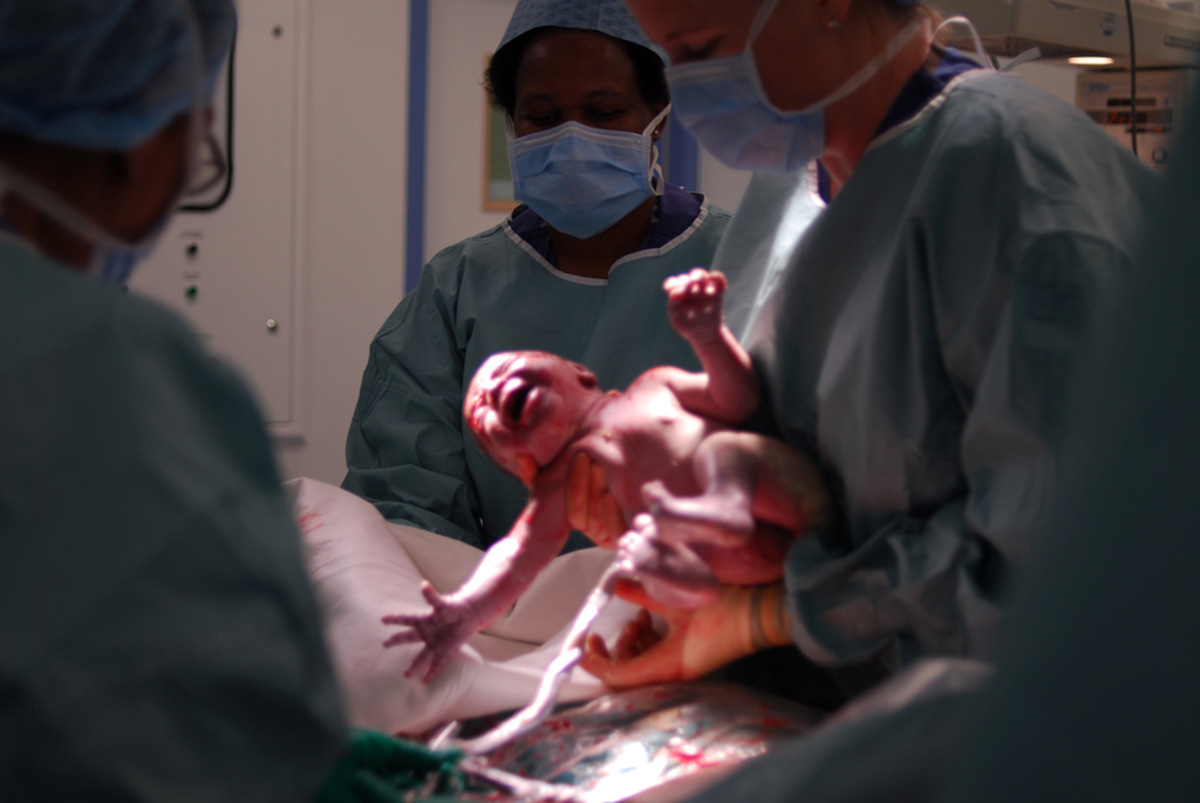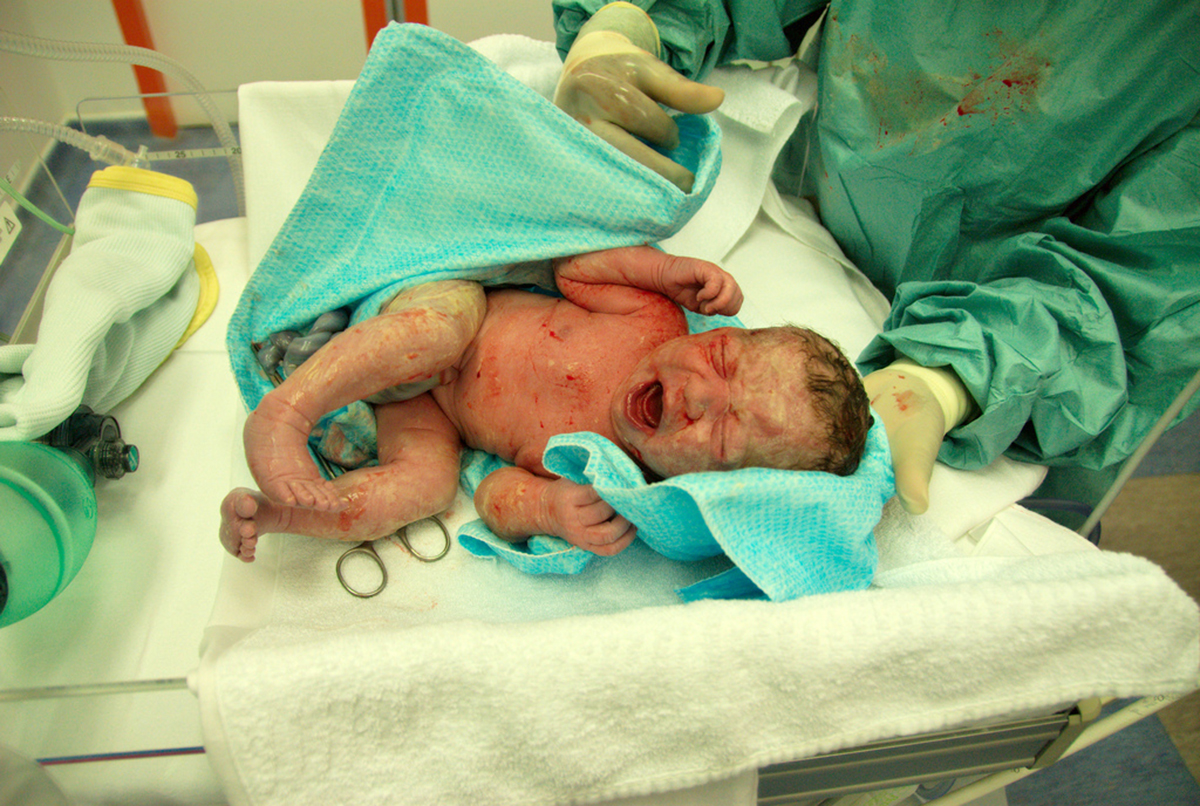Childbirth has always been dangerous. In the 18th and 19th century, women who had given birth went through a "churching" ceremony to return them to the church. The ceremony started by giving thanks to god that the woman had survived childbirth. Fast forward a hundred years to the middle of the twentieth century, and things had changed for the better — but they were sill bad.

Journalist and novelist Emily Woff looks back on her own mother's experience of birth: "My mother's first birth was a lonely and scarring experience. My father was not allowed to be present. She was strapped to a bed on her back, her feet hoisted into stirrups. She was given ether for the pain and the baby was yanked out of her birth canal with metal forceps. Her vagina ripped badly, and she felt alone, ashamed and frightened. She said she was treated like an animal. Her baby was taken away to a separate room and only brought back to her when the staff deemed it necessary." (Source: The Guardian.)
That was the advanced method, designed to free women from the horrors of squalid home births unattended by medical staff, with no pain relief, no emergency help on hand and no professional guidance. Incredibly, Ms Woof's mother's story was actually an improvement on what had gone before.
But it triggered its own backlash. Women objected to childbirth being "medicalized" — treated like part of a disease, instead of something natural. They objected to being treated without respect by medical staff, to being given drugs without their consent, to being injured by careless staff, to being isolated from their husbands or lovers — and from their newborn children. The natural-birth movement was born.
While that may be true for some people, it doesn't always work out. Some women have relatively easy births while for some, the process is filled with blood and horror. And it's difficult to predict in advance how it will be for any particular woman. How well-prepared a woman is doesn't seem to make much difference. How fit she is isn't always a reliable indicator. Many women have set out for natural childbirth, only to be waylaid by the process of their own childbirth and find themselves en route for a hospital birth anyway.
READ Natural Pain Relief For Labor: Alternative Methods of Pain Relief During Childbirth
It's great that there's a movement that's teaching women to take control of their own pregnancies. And it's definitely great that there's somewhere to go when it goes wrong, or it you prefer to do things a different way. But what if both these disparate methods are both wrong, for the same reason?
We're Thinking About Childbirth All Wrong
That's the mesage from obstetrician Michael Odent. To be more precise, we're thinking about childbirth and that's all wrong.
Dr Odent thinks the main obstacle to a safe, easy, naturalchildbirth isn't physical, as such.
"Academics generally offer mechanical explanations, referring to the size and shape of the baby's head in relation to the mother's pelvis," he observes, but while he allows that "that is partly true," he points out that "some women give birth easily: in some cases, the baby may be born before the mother even realises she is in labor." (Source: New Scientist.) That wouldn't be true, says Dr Odent, "if the primary reasons were menchanical."

So what is the reason?
"In reality," Dr Odent says, "the main reason for difficulties in childbirth is that women's capacity to give birth is repressed by neocortical activity in the brain. Put simply, the mother goes on thinking in the birthing situation," and it's this brain activity that's to blame for difficult births.
It's important to underline the fact that Dr Odent isn't saying that birthing difficulties are somehow "all in the mind." Instead, he's pointing out that activity in pone area of the brain can suppress activity in another. And it's not just activity in the brain. Brain states are linked to hormonal states.
Dr Odent calls this the "fetal ejection reflex," and argues that the key to giving birth fast and naturally, with minimal rislk to both mother and child, is triggering the fetal ejection reflex and then not triggering neocortical activity. Dr. Odent says he has seen the fetus ejection reflex in action in hospital births only rarely and that it is more common in home births.
The hospital environment, then, is part of the reason modern births are so difficult, according to Dr Odent's view of things. The hospital, with its questions, plans and hurrying nurses, contains lots of opportunitites to interrupt the fetal ejection reflex by triggering neocortical activity. Dr Odent says, "today, laboring women are culturally conditioned to think that they are unable to give birth by themselves, that a partner or an expert must be there." The high-arenaline preparations for birth, with the attendant excitement, also inhibit the release of oxytocin and the fetal ejection reflex. And wome struggle to relax and "let go" surrounded by professionals and people they know. Finally, hospitals, with their bright lights, inhibit the release of melatonin, which works synergistically with oxytocin.
"The best situation is when the woman in labor is not disturbed too much. A good example is a woman giving birth in a small, dark, warm room with just one midwife sitting silently in the corner, knitting."
READ Birth Rape: It's Criminal, But Is It Rape?
Dr Odent doesn't recommend abandoning modern birth practices: just modifying them to mesh better with the way he says our brains work and produce more births guided by the fetal ejection reflex and fewer epidural-and-forceps ones. When we're offered another way, between hospitalized, medicalized births as something that professionals do to women, and the opposite extreme, maybe it's time to listen.
- Photo courtesy of salimfadhley via Flickr: www.flickr.com/photos/salimfadhley/166471938
- Photo courtesy of salimfadhley via Flickr: www.flickr.com/photos/salimfadhley/2140974039
- "Let's be honest about childbirth," The Guardian, http://www.theguardian.com/lifeandstyle/2010/mar/13/natural-childbirth-caesarean-emily-woof "Don't Distract Her, She's Having a Baby," New Scientist, http://www.sciencedirect.com/science/journal/02624079/227/3028


Your thoughts on this